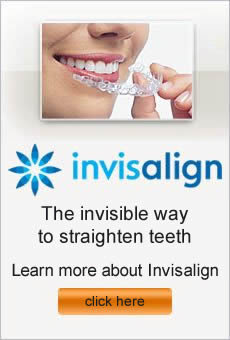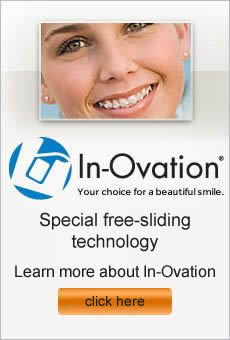An estimated 44 million people in this country deal with chronic clenching and grinding. Also called bruxism, this condition can lead to broken crowns, sore muscles, worn teeth, sleep disruptions, and pain. Often, patients don’t even know they have issues with clenching and grinding, but they may wake up with headaches, toothaches, or soreness. Besides causing discomfort, bruxism can weaken enamel, lead to fractures, and eventually loosen teeth.
Adults and children at any age can develop bruxism. Usually, children outgrow this condition as they mature. No one knows the exact causes of bruxism, but several factors can contribute to clenching and grinding. Stress, sleeping problems, alignment issues, and missing teeth may result in problems with bruxism.
One successful treatment for bruxism is an NTI-tss. After a thorough evaluation, your dentist may recommend this type of therapy. A custom oral appliance, the NTI-tss fits securely over upper and lower front teeth while you sleep.
The NTI-tss will limit the intensity of any clenching and prevent back teeth from touching, which minimizes bruxism. Since the NTI-tss is smaller than full coverage mouth guards, many patients find it more comfortable and easier to wear. As well as helping with bruxism, the NTI-tss helps with migraine pain and may lessen symptoms of TMJ dysfunction.
Tips for dealing with bruxism:
- Apply warm, moist compresses to relieve sore muscles
- Find ways to relax, such as mediation, reading, or listening to soothing music
- Talk with your dentist about restorative dental options to rebuild damaged teeth
Sherman Oaks Orthodontist
From crooked to protruding teeth, to much more difficult dental problems, orthodontia can effectively correct a wide array of issues. Whether your teeth are widely gapped, overly crowded, or oddly placed, your orthodontist can recommend a teeth straightening option that will fix your crooked smile. Some of the issues that can be corrected with orthodontics include:
- A jaw that is not large or wide enough for the teeth to emerge, causing crowding of the teeth
- Teeth that have excessive space between adjacent teeth which creates gaps
- Malocclusions, or bite issues, caused by teeth or jaws that are misaligned and do not fit together the way they are intended to align
- Upper teeth that extend too far forward, or lower teeth that do not sit far enough forward
- Overbite caused by upper front teeth that stick out over the lower front teeth
- Underbite caused when the lower jaw pushes out, leaving the lower front teeth to rest in front of the upper front teeth
- Openbite, often a result of thumb sucking or tongue thrusting, which keeps the front teeth from overlapping or meeting as the bite closes
- Upper teeth that sit inside the lower teeth, causing crossbite
These dental problems not only affect the appearance of your smile but the functions of your teeth. Left untreated, these conditions can cause issues such as damage to tooth enamel, jaw discomfort or injury, and chewing or speech problems. A consultation with a qualified orthodontist can help you determine what type of orthodontic treatment will best address your specific oral problems. With orthodontic treatment, you can correct these issues and walk away with a more perfect, beautiful smile.
If you are looking for an orthodontist in Sherman Oaks, contact our office today!
Dentists who are trained to specialize in diagnosing, preventing, and repairing structural issues with your teeth are called orthodontists. It is no small feat to become a board-certified orthodontist, with on average at least a decade’s worth of education required to achieve this goal. This specialized training and experience is one reason that seeking treatment for misaligned or crooked teeth from an orthodontist may be worth it for your smile.
Orthodontists usually have an interest in the medical field from early in life. Even in high school, many students who end up with this career take courses in anatomy, biology, chemistry, physics, and other science-related topics to learn more about it.
After high school, a college degree is a must. Orthodontists tend to major in areas heavy in science, such as biology or chemistry. During the later college years, students intending to apply to dental school must pass the Dental Acceptance Test (DAT). If accepted to dental school, students then usually face four years of classes, lab work, and supervised practice. Real life practice in clinical environments provides useful experience for dental students while still in school. Upon graduating, students earn a Doctor of Dental Medicine degree and then must pass the National Board Dental Examinations on top of that to receive a license to practice dentistry.
Orthodontics is a specialization within dentistry, so future orthodontists must additionally complete a graduate school program for specialized training. Students may gain a master’s degree or doctorate in orthodontics, oral science, or oral biology. Training involves performing orthodontic work on actual patients. Lastly, orthodontists must pass written and clinical exams through the American Board of Orthodontics.
All of this extensive education, training, and practice means that orthodontists should be experts by the end in treating all sorts of oral issues. You should feel confident that an orthodontist will be able to help you achieve your smile goals.
Sherman Oaks Orthodontist
The goal of orthodontics is to improve the appearance of function of your teeth and jaw, and various kinds of appliances help achieve that goal. Each patient’s treatment plan is unique, but here are some common appliances that orthodontists use to correct oral problems.
Rubber bands
Elastics, or rubber bands, are sometimes needed to create force that will help correct your bite. They are often stretched between upper and lower braces, kept in place by attaching them to hooks. For the fastest outcome, strictly following your orthodontist’s directions for wearing the elastics is the best approach. You may experience tenderness at first because your teeth are moving, but it will fade after a few days of consistent wear.
Headgear
Malocclusions may require the use of appliances like headgear, which attaches to your braces and pulls on both your teeth and jaw to create movement into better positions. There are different types of headgear for different goals, such as the direction of pull needed on your jaw. Often, orthodontists recommend that headgear be worn at night so that there is less embarrassment or hassle associated with the appliance. If your orthodontist suggests headgear is needed for optimum treatment of your condition, it is likely the best way to achieve your orthodontic goals and the guidelines should be followed for use.
Retainers
Once your braces have done their job and are removed from your teeth, treatment is usually not over. Most of the time, orthodontists provide retainers to help your teeth maintain their new positions. Over time, your teeth will settle into their new spots and your orthodontist may allow you to quit wearing the retainers, but until that time you should follow the directions for consistent use. That is the ideal way to keep your beautiful new smile.
If you need an orthodontist in Sherman Oaks, CA contact our office for an appointment.
Did you know healthy teeth and gums can help maintain good general health? A healthy smile will mean you look your very best, and your risk of developing certain diseases or health issues may decrease. If you’d like to have great oral health and a gorgeous smile, read the following hints:
Ask about Sedation Dentistry
Many people feel too anxious or nervous to regularly visit a dentist. This could be due to a previous bad experience, a strong gag reflex or a reaction to the sights and smells in a dental office. Sedation dentistry provides numerous options to keep you comfortable during treatment, including nitrous oxide, oral sedation and intravenous sedation.
Don’t put up with Pain
Quite often people will put up with facial pain caused by TMD. This is a disorder affecting the jaw joints, and can occur if the jaw is misaligned. Your dentist in Reno can examine your teeth and jaws, and if necessary will provide treatment to resolve this issue.
Invest in a Mouthguard
If you like to play sports, invest in a custom made mouth guard. Popular activities such as soccer, football and baseball can all cause facial injuries. Even non-contact spots such as horse riding and gymnastics can result in damage to the teeth, jaws and face. If you clench and grind at night, ask your dentist about a night guard to protect your teeth from cracking and breaking.
Look After Your Teeth at Home
Twice daily brushing and once-a-day flossing are essential to maintain oral health. These habits help remove plaque before it can harden into tarter.
Book Regular Appointments
Schedule regular appointments with your dentist in Reno, and book a professional cleaning at the same time. This is essential, even if your teeth and gums appear healthy. Regular checkups help pick up any problems before they cause unpleasant symptoms such as toothache, and when they are much cheaper and easier to treat.
Orthodontist in Sherman Oaks CA



